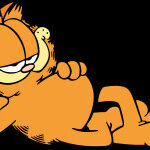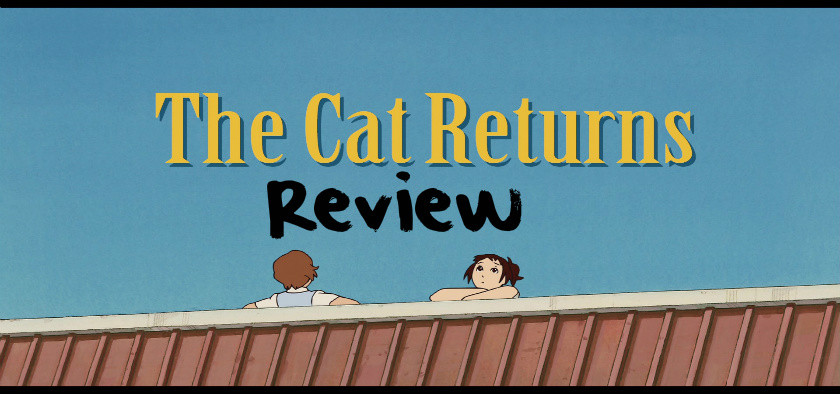 cat01
cat01
For enthusiasts of Japanese animation and the enchanting worlds crafted by Studio Ghibli, The Cat Returns stands as a unique and delightful film. Released in 2002, this movie offers a lighter, more whimsical adventure compared to some of Ghibli’s more epic and profound works. Directed by Hiroyuki Morita, in his directorial debut for a feature film, The Cat Returns provides a captivating 75-minute escape into a fantastical realm. While it might be considered an oddball within the studio’s filmography, its charm and playful spirit have garnered it a special place in the hearts of many animation fans. Originally conceived as a short project, it blossomed into a full feature thanks to Hayao Miyazaki’s vision, demonstrating the studio’s ability to find magic in even the most unexpected ideas. This review delves into why The Cat Returns remains a cherished gem, exploring its story, animation, and enduring appeal.
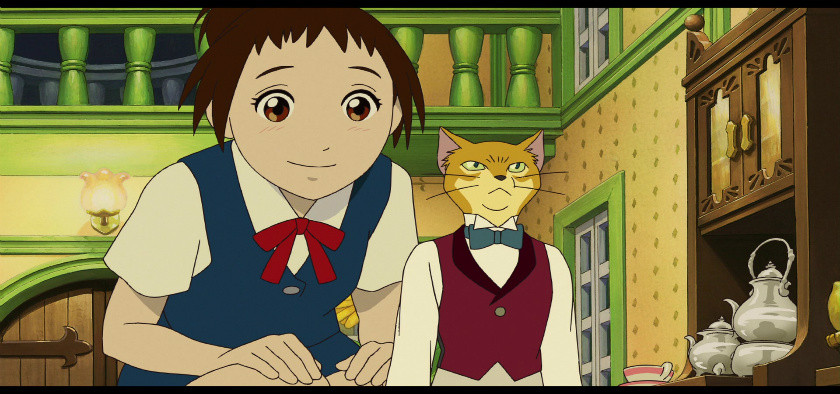 cat02
cat02
The Story of Haru and the Cat Kingdom
The narrative centers around Haru, a high school girl voiced by Anne Hathaway in the English dub, who is experiencing a series of unfortunate events. Her ordinary teenage life takes an extraordinary turn when she bravely saves a cat from being hit by a vehicle. Unbeknownst to Haru, this is no ordinary feline but Lune, the Cat Prince (voiced by Andrew Bevis). As a token of gratitude, Haru receives a barrage of peculiar gifts from the Cat Kingdom, culminating in an even more astonishing proposal: marriage to the Cat Prince himself.
Overwhelmed and seeking a way out of this bizarre engagement, Haru’s quest for help leads her to the Baron Humbert von Gikkingen, a distinguished and anthropomorphic cat figure (voiced by Cary Elwes). The Baron, along with his steadfast companion Muta (voiced by Peter Boyle), agrees to assist Haru. However, before they can fully formulate a plan, Haru is whisked away to the Cat Kingdom. The film then transforms into a thrilling rescue mission as the Baron and Muta embark on a journey to infiltrate the Cat Kingdom and help Haru escape her feline predicament. This setup lays the foundation for a fast-paced and imaginative adventure filled with whimsical characters and enchanting locations.
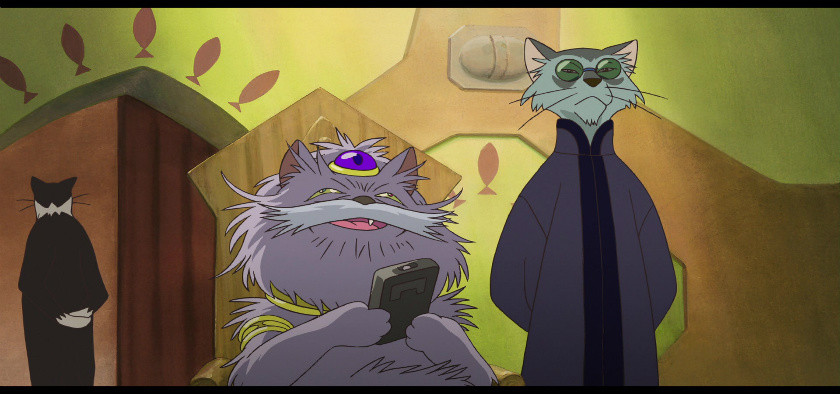 cat03
cat03
Animation and Artistic Style: A Departure from Traditional Ghibli?
The Cat Returns showcases the beautiful 2D animation synonymous with Studio Ghibli, yet it presents a subtly distinct visual style. While retaining the studio’s hallmark fluidity and expressive character animation, the designs lean towards a more simplistic and anime-influenced aesthetic. The human characters, in particular, deviate slightly from the archetypal Ghibli style, embracing a look that aligns more closely with broader anime conventions.
This stylistic choice enhances the film’s lighthearted and adventurous tone. The streamlined designs contribute to exceptionally fluid animation, perfectly complementing the fast-paced narrative and whimsical nature of the Cat Kingdom. This artistic direction underscores that The Cat Returns, while undeniably Ghibli, carves its own niche within the studio’s diverse portfolio, demonstrating their artistic range.
Why “The Cat Returns” Resonates: A Lighthearted Fantasy Adventure
The film’s 75-minute runtime is expertly utilized to deliver a concise and thoroughly enjoyable fantasy adventure. The Cat Returns embraces its simplicity, focusing on creating an easily accessible and entertaining experience. It avoids complex world-building or convoluted plotlines, instead immersing the viewer directly into a whimsical and engaging story. This directness is a key strength, making it a perfect choice for viewers seeking a relaxing and delightful cinematic escape.
Despite its lighter tone, The Cat Returns retains the hallmarks of a quality Studio Ghibli film. It features endearing protagonists, memorable supporting characters, a richly imaginative world, and a humorously villainous antagonist. The visuals, from the fantastical Cat Kingdom to the dynamic action sequences, are stunning and contribute significantly to the film’s overall charm. Comparisons to fantasy comedies like The Princess Bride are apt, as The Cat Returns blends humor and eccentricity within a fairy tale framework, complete with its own set of fantastical rules and captivating visuals. While a subtle message of self-belief is present, the film primarily aims to entertain and amuse, prioritizing whimsicality and comedic fantasy over heavy thematic depth. This focus is a deliberate and successful choice, proving that cinematic simplicity, when executed with skill and heart, can be profoundly rewarding.
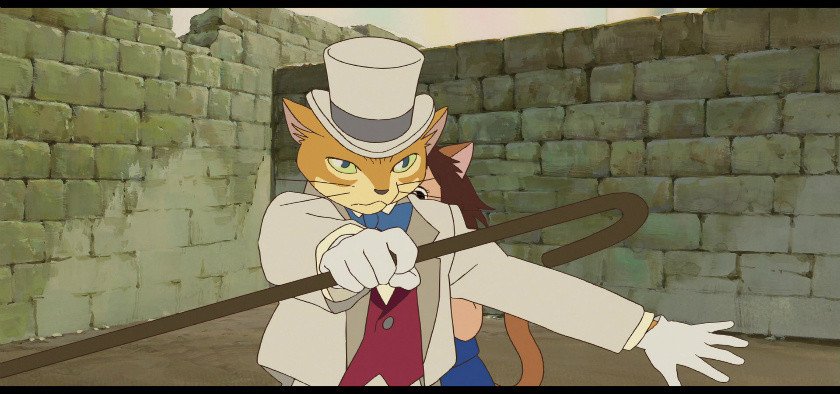 cat04
cat04
Strengths and Minor Weaknesses: A Balanced Perspective
While overwhelmingly positive, a balanced review acknowledges minor shortcomings. The final confrontation between the Baron and the Cat King, although preceded by an exciting chase, concludes rather swiftly. Additionally, while the film’s brisk pacing is generally a strength, there are moments where further exploration of certain plot points or character backstories could have enriched the narrative. For instance, Muta’s backstory, revealed late in the film, feels somewhat underdeveloped and serves more as world-building detail than a significant plot element. Similarly, the crow character, voiced by Elliot Gould, is memorable but underutilized, appearing only in brief segments of the film.
However, these minor critiques are easily overshadowed by the film’s numerous strengths. The pacing, while quick, ensures consistent engagement, and the animation quality and character designs are consistently impressive. These minor areas for potential expansion do not detract significantly from the overall enjoyment and charm of The Cat Returns.
The Voice Cast: English Dub Excellence
The English voice cast of The Cat Returns is exceptionally well-chosen and delivers outstanding performances. Anne Hathaway embodies Haru with a perfect blend of innocence and burgeoning strength, making her relatable and engaging. Cary Elwes shines as the Baron, injecting the character with wit and heroic charm, clearly relishing the role. Peter Boyle provides comedic relief as Muta with his distinctive voice and delivery. Tim Curry’s portrayal of the Cat King is particularly memorable; his over-the-top, almost hippie-esque interpretation injects hilarious eccentricity into the villain, proving endlessly entertaining. Even Andy Richter, voicing the Cat King’s assistant, delivers a commendable comedic performance.
The English dub is notable for its successful translation of humor, a feat not always achieved seamlessly in Japanese animated films. The comedic timing and delivery resonate universally, transcending cultural nuances that can sometimes hinder the appreciation of humor in translated works. The Cat Returns stands out as a Japanese animated film where the comedy is readily accessible and enjoyable for a global audience.
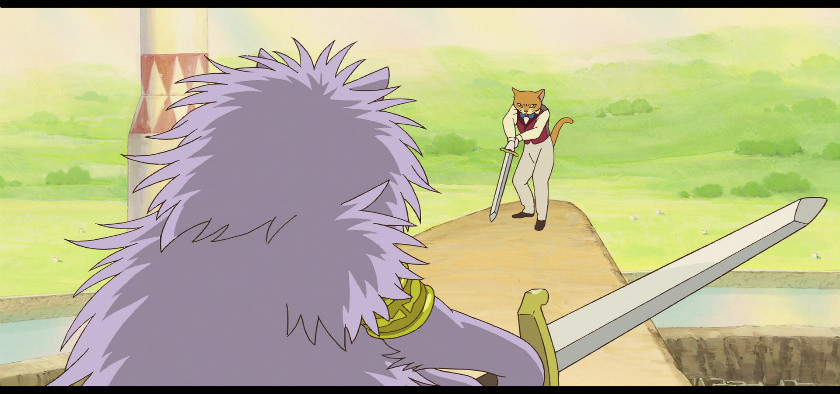 cat05
cat05
Conclusion: A Hidden Gem in the Ghibli Collection
The Cat Returns may not be Studio Ghibli’s most monumental or thematically complex film, but it is undeniably a Studio Ghibli creation through and through. It embodies the studio’s commitment to quality animation, engaging storytelling, and memorable characters. Its humor, fantastical imagery, and brisk pacing contribute to a thoroughly entertaining viewing experience. Often considered a hidden gem within the studio’s extensive catalog, The Cat Returns has, for many, grown into a beloved favorite. While minor flaws exist, they are easily forgiven in light of the film’s overall charm and delightful spirit. It is a splendid film that exemplifies the lighter, more whimsical side of Studio Ghibli’s storytelling, and a must-watch for animation enthusiasts and those seeking a heartwarming and humorous Japanese anime adventure.

